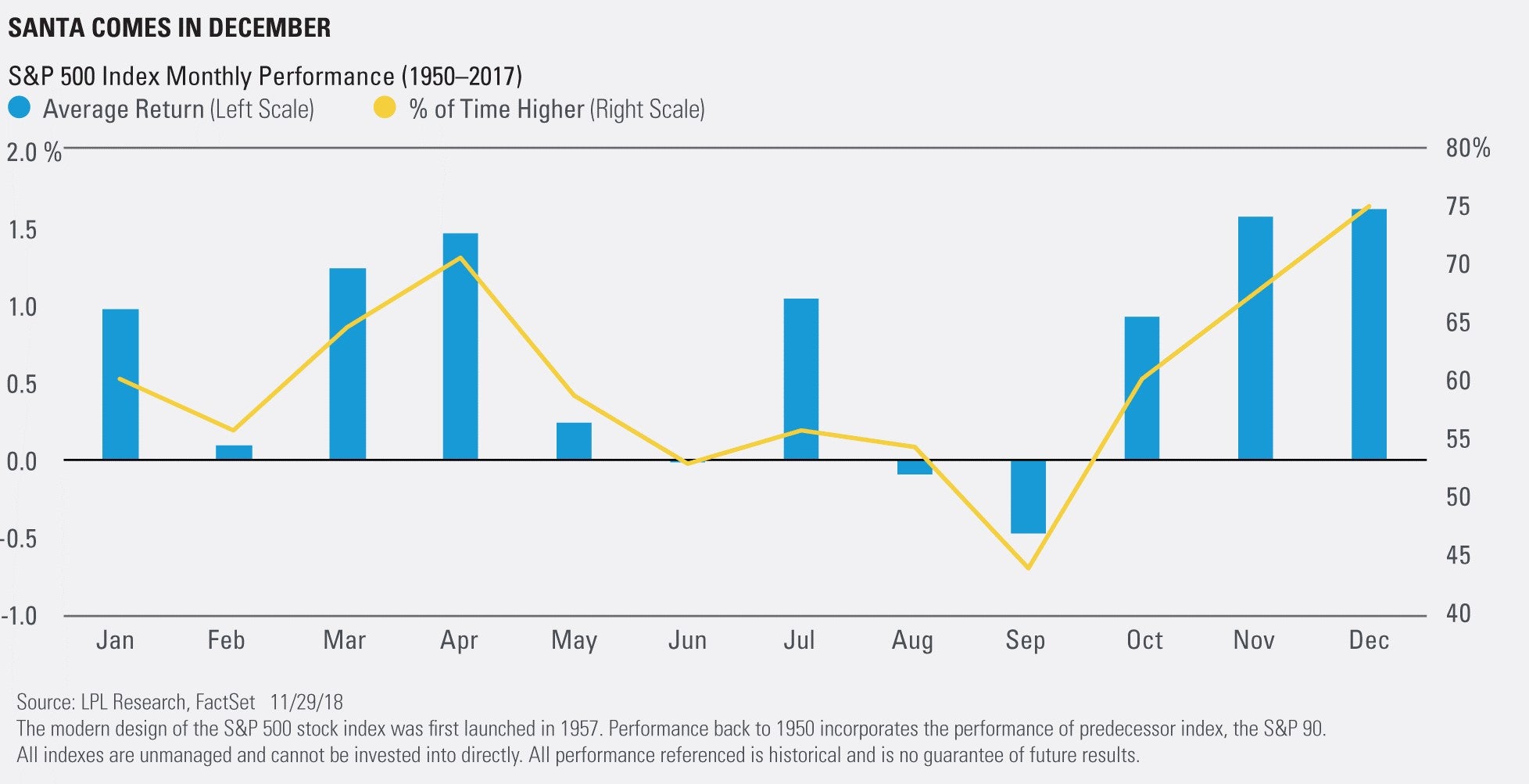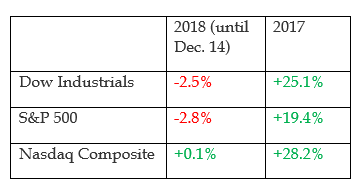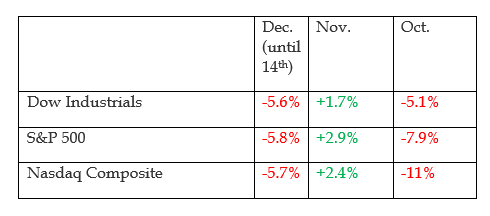The financial markets are in doldrums, with the final quarter of the year being particularly unkind for Wall Street participants. A combination of factors, including the ongoing U.S.-China trade imbroglio, are slowing global growth, and the dollar's strength and monetary policy normalization by the Federal Reserve are contributing to the slump.
Commodities are also going through harrowing times, with oil, gold, silver, copper and aluminum all trending lower for the year.
The question now in the minds of traders is whether a Santa Claus rally will salvage some pride for the markets after the tough phase witnessed since October.
Santa's Benevolence
The Santa Claus rally is an upward momentum seen in the market during the last week of December that gives a nice lift to the market.
"Santa Claus tends to come to Wall Street nearly every year, bringing a short, sweet, respectable rally within the last five days of the year and the first two in January," according to the Stock Trader's Almanac.
Since 1950, the average gain for this period of the year has been 1.3 percent, and since 1969, it has generated positive returns 75 percent of the time.
On a more ominous note, Santa's failure to turn up portends a coming bear market, the Almanac said.
There isn't a solid theory to explain the Santa Claus rally. Some attribute it to investors buying before January to take advantage of price increases due to the January effect.
The January effect refers to increases in equity prices in January following a drop in prices in December, triggered by fund managers selling for tax loss harvesting purposes.
Another theory making the rounds is that very big institutional investors go on a vacation during December, allowing reckless retail traders take control of the market.
Generally, December has had the highest average return since 1950, according to LPL Research. The month also has been higher more often than others.

Source: LPL Research
2018 Vs. 2017
Here's where the U.S. equity market stands relative to its performance in 2017.

October was the worst month for the market in 2018.

Santa To Sidestep Wall Street?
With about two weeks left in the year, analysts are increasingly skeptical about a Santa Claus rally. The Sino-American trade war has yet to end, although progress was made following a meeting between the presidents of the two countries at the sidelines of the G20 meeting held between Nov. 30 and Dec. 1 in Buenos Aires, Argentina.
The two sides said there won't be a hike in tariffs Jan. 1.
The news flow on this front has been encouraging, Bloomberg said. The Chinese Cabinet will discuss over the next few days a proposal to reduce tariffs on imported U.S. cars from 40 percent to 15 percent, the publication said, citing people familiar with the matter.
A few analysts are still hoping a year-end rally will materialize. A 7-percent rally could be in the offing, CNBC reported, citing Oppenheimer Asset Management Chief Investment Strategist John Stoltzfus.
The analyst premised his optimism on a potential rally in consumer discretionary stocks, which benefit from strong wages and buoyant consumer spending, as well as a rebound in beaten down tech stocks.
With the market still scratching at the bottom, a softer-than-normal Santa Claus rally is on the cards, the CNBC reported, quoting Wells Fargo strategist Chris Harvey. Harvey has a year-end target of 2,900 for the S&P 500 Index.
The sell-off in equities and the slight inversion in the yield curve could just be the catalysts that could prompt the Fed to pause, according to Moody's.
The Federal Reserve's next policy setting meeting is scheduled for Dec. 18-19.
"Given the steadiness of inflation expectations despite a 3.7-percent unemployment rate and a firm dollar exchange rate, the FOMC is likely to heed the market's advice and lower its projected trajectory for fed funds," Moody's said.
LPL Financial's John Lynch sees falling asset prices, slower economic growth overseas, tariffs, housing market softness, falling oil prices and lower inflation expectations adding to the Fed's "cover" to ease up on rate hikes, which he said could be a positive stock market catalyst in the coming weeks.
Related Links:
Most FAANG Stocks Are In Bear Territory — But Still A Good Bet For Long-Term Investors
Revisiting Apple's iPhone Woes As Stock Dips Into Bear Market Territory
© 2025 Benzinga.com. Benzinga does not provide investment advice. All rights reserved.
Trade confidently with insights and alerts from analyst ratings, free reports and breaking news that affects the stocks you care about.